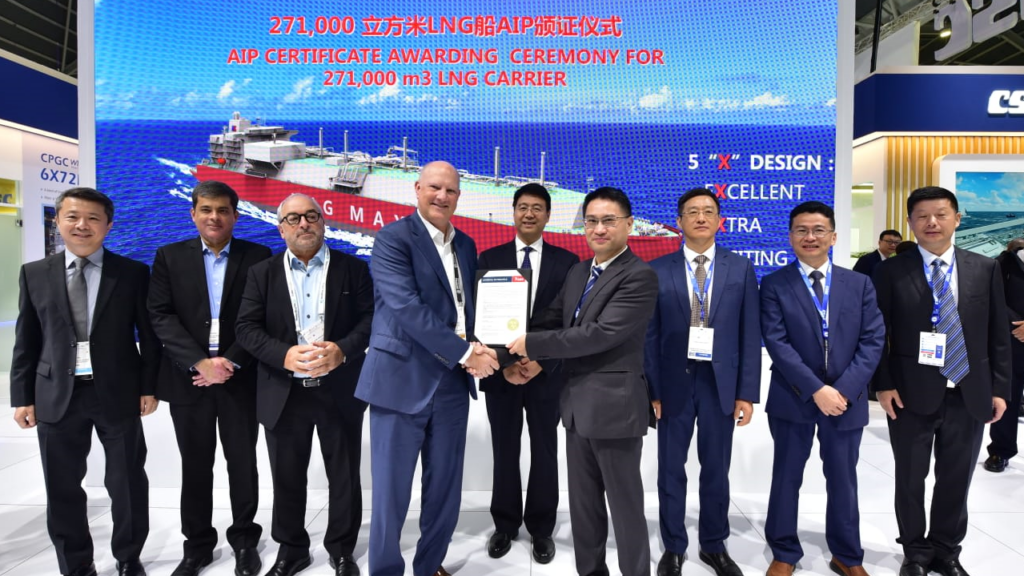 At Gastech 2023, ABS issued an approval in principle (AIP) to Hudong-Zhonghua (HZ) Shipyard for its new, state-of-the-art liquified natural gas (LNG) carrier design, currently the world’s largest with 271,000 cubic metres of cargo tank capacity.
At Gastech 2023, ABS issued an approval in principle (AIP) to Hudong-Zhonghua (HZ) Shipyard for its new, state-of-the-art liquified natural gas (LNG) carrier design, currently the world’s largest with 271,000 cubic metres of cargo tank capacity.The design features flexible dual-fuel propulsion and an air lubrication system for more sustainable operations. The synergy of a more efficient hull and the use of low-carbon fuel in the fuel-efficient engine is expected to translate to the lowering of the overall carbon footprint of the vessel.
The design is also equipped with selective catalytic reduction (SCR) that should reduce its nitrogen oxide (NOx) emissions, which will help the vessel comply with IMO Tier III controls even when in diesel mode.
This newly designed LNG tank is equipped with an enhanced cargo containment system together with a real-time sloshing monitoring system, and the vessel is equipped with a hull stress monitoring and an anti-collision system, features not normally found on LNG carriers. All of these measures are designed to improve the safety and reliability of the vessel.
“As the world’s premier classification society for gas carriers, with more than 50 years of experience, we are proud to support this advanced new design from Hudong-Zhonghua. Vessels with larger capacities and modern, efficient propulsion systems will be integral to sustainably supporting future LNG needs around the world,” said John McDonald, (pictured, centre left) ABS President and COO.
Song Wei (pictured, centre right) , Head of Technical Department, Hudong-Zhonghua, said: “Hudong-Zhonghua is very honored to obtain this AIP for the Global Max type 271K LNGC, which brings a new, noticeable member of our G5 ever constant series family to worldwide customers. A Global Max type 271K LNGC will have a lower carbon intensity index (CII), about 23 percent lower than a conventional 174K LNGC, which will enable the vessel to get longer qualified service years free of operation limitations. We highly appreciate ABS’ great effort in the cooperation and development of a robust solution for the LNG shipping market.”
With the AIP secured, the 344-metre vessel design now enters additional design and analysis work before being presented to potential owners.